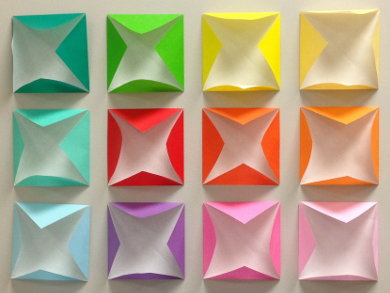Kirigami is a traditional paper-cutting technique that has roots in origami. This technique can be adapted to create graphene/biomaterial composites with different structures and potential uses in flexible electronics—for example, as shape-transforming electronics or as stretchable energy harvesters.
Vladimir V. Tsukruk and colleagues, Georgia Institute of Technology, Atlanta, USA, have created a soft, paper-like bionanocomposite material composed of graphene oxide (GO) and silk fibroin (SF). The material was created by mixing GO and SF (weight ratio 50:1) and cast-drying the mixture. The composite can be cut and transformed into various pop-up or stretchable structures using a knife. The team used a programmable drag knife in an enclosed chamber with a humidifier to make both full and partial cuts.
The researchers produced, for example, single-electrode triboelectric nanogenerators, i.e., generators that transform movement into electricity, using the paper-like material. Conductive areas in the material were created by reducing the graphene oxide. The kirigami structures are capable of deforming by up to 300 %, with a strength in the 1–10 MPa range. This is comparable to high-performing elastomeric materials. The team attributes the mechanical strength of the material to a network of hydrogen bonds between the GO and SF components.
- Pop-Up Conducting Large-Area Biographene Kirigami,
Ruilong Ma, Changsheng Wu, Zhong Lin Wang, Vladimir V. Tsukruk,
ACS Nano 2018.
https://doi.org/10.1021/acsnano.8b04507


